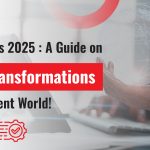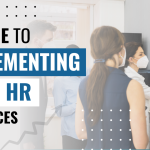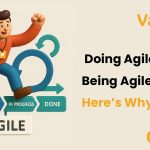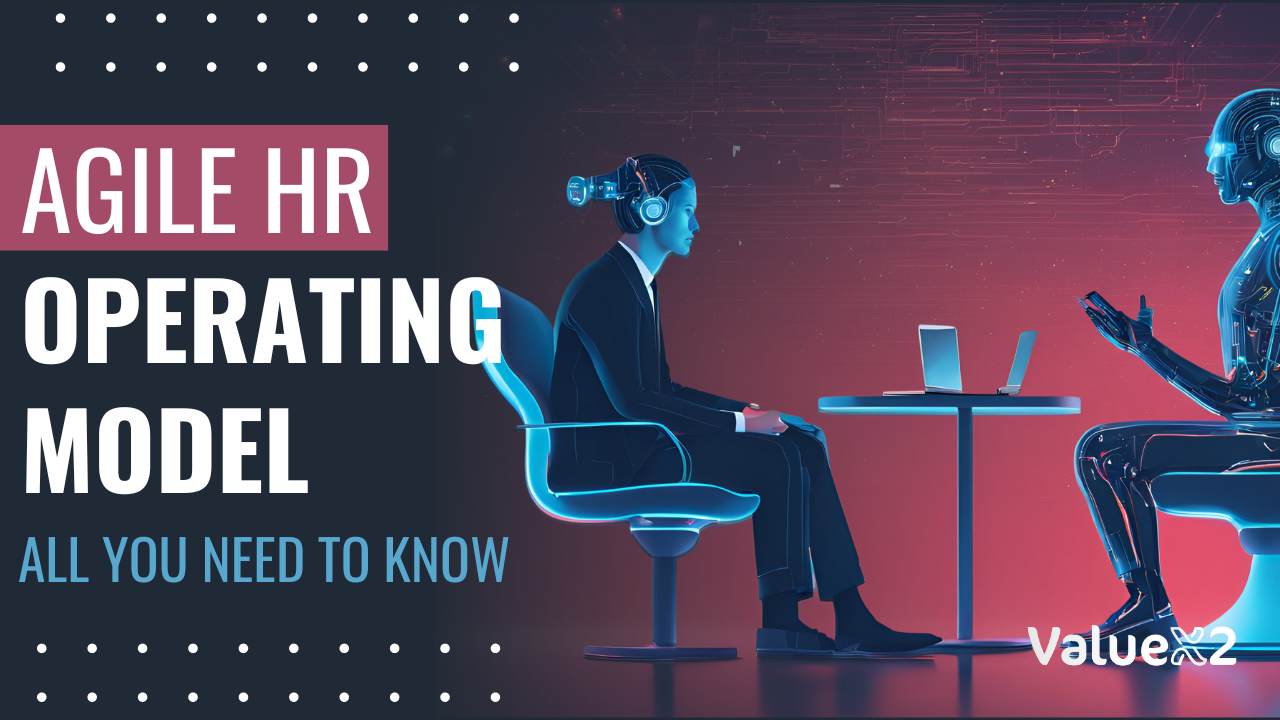 What is Agile HR?
What is Agile HR?
Business change is faster than it has ever been. Products are going out of date by the month, AI is rewriting job descriptions overnight, and employees are expecting consumer-grade user experiences at work. What we are trying to say is that the traditional HR teams are struggling to respond. In 2025, the question is not “how HR will evolve with AI? But how quickly can they pivot?
Agile HR is a credible answer to this challenge. It takes the processes behind high-performing software development teams and repurposes them for people operations. Agile HR allows organisations to hire, develop, and engage talent in real-time, allowing HR to be as agile as the markets its organisation serves.
The Agile HR operating model transforms the working of Human Resources (HR) departments work by changing responsiveness and integration. Typically, HR is regarded as a function that encompasses strict procedures, policies, and long-term strategies. However, this approach is replaced by the Agile Framework that focuses on the importance, flexibility, and constant feedback, and the approach based on iterations. It allows HR to become more employee-centric and a strategic business partner in helping the business functions. This blog explains what the Agile HR operating model is and the principles that underpin the practices discussed in this context.
Key Takeaways (TL;DR)
In a hurry? Seven things you’ll learn in the next 10 minutes
- Agile HR = operating model. It redesigns how HR thinks, plans, prioritises, and delivers, not just what tools it uses.
- Small, decentralised teams outperform large departmental silos. Organisations that embark on recruiting, L&D, and analytics as features of a two-week sprint significantly reduce time-to-hire by 35% and increase engagement by 12%.
- Continuous performance check-ins replace annual performance reviews. Quarterly OKR conversations provide productivity increases of 1.5x.
- AI can free HR up for strategic work. Eliminating manual screening with chat-based screeners and people analytics dashboards enables HR to recover approximately 30 hours per month.
- All success is measured in terms of value-time-to-value, eNPS – not paperwork.
- Start with a 90-day pilot. Generate ROI in one HR stream, then scale.
- Formal training speeds up adoption. Teams that complete ICAgile’s Agility in HR (ICP-AHR) get to steady-state agility 70% faster.
Difference Between Traditional HR to Agile HR?
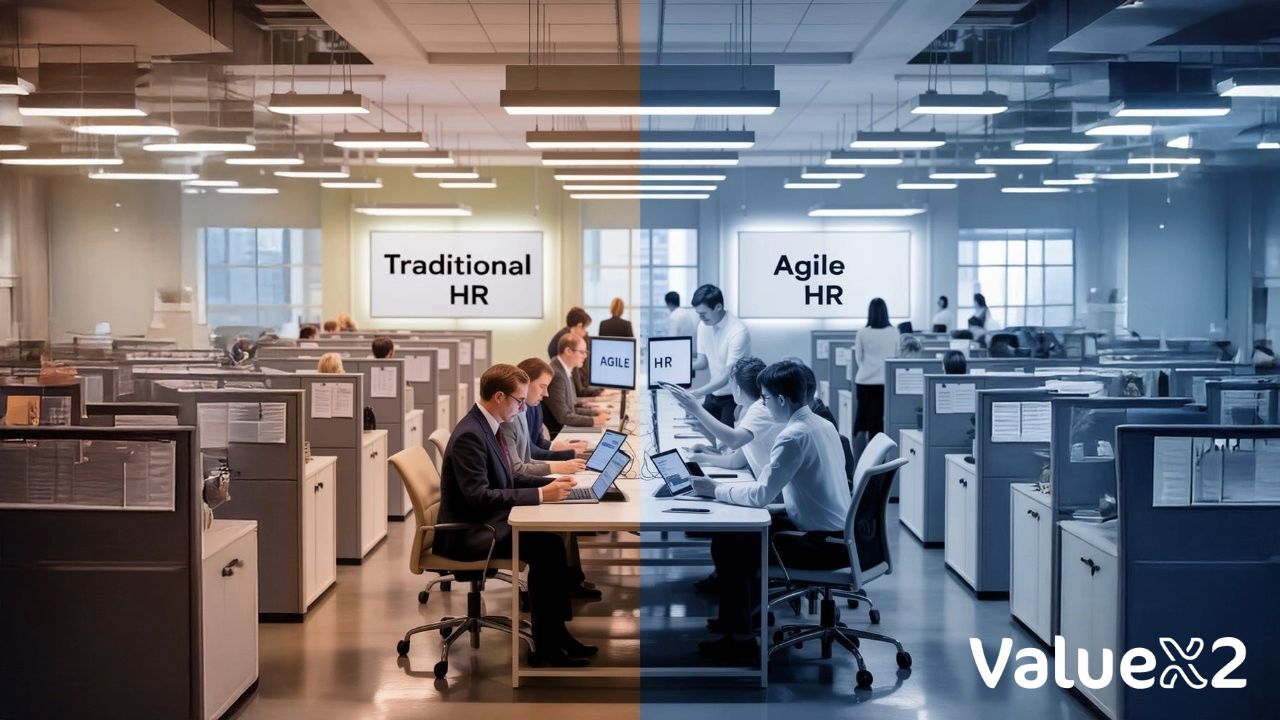 Traditional HR Frameworks require a linear pipeline for work: They collect requirements, design a solution, implement it, and maintain it until the next round of new requirements. It does well at compliance, but it can’t change priorities halfway through the year! And often, all the hard work is carried out in a vacuum without having constant feedback from the employee. Agile HR does not use a pipeline model; it uses a platform model: a flexible architecture that allows groups of workers to apply solutions iteratively, concentrating on solving the most significant people problems, with big impacts.
Traditional HR Frameworks require a linear pipeline for work: They collect requirements, design a solution, implement it, and maintain it until the next round of new requirements. It does well at compliance, but it can’t change priorities halfway through the year! And often, all the hard work is carried out in a vacuum without having constant feedback from the employee. Agile HR does not use a pipeline model; it uses a platform model: a flexible architecture that allows groups of workers to apply solutions iteratively, concentrating on solving the most significant people problems, with big impacts.
The Harvard Business Review describes agility as the “default operating model for organisations that are able to outperform their peers in volatile market environments” (from “Agile at Scale,” HBR, 2020). Studies reveal that companies embracing agile ways of working grow their revenue and provide more resilient cultures than their slower-moving counterparts.
Some signs you might identify from the traditional HR world:
- A six-month lead time to open a vacant position.
- Engagement survey run once a year, action plan delivered six months later.
- Learning catalogues are refreshed annually, while in-demand skills expire every 18 months.
- High churn rate with demotivated employees
- Constant pressure to higher for new skills at a very fast pace
- Complicated Hierarchical Structures
How Can You Understand Agile Methodology in HR
It is based on the ideologies of repetitiveness, teamwork, and flexibility to change. Agile, which was initially used for software development, has been implemented in many functions, including HR, marketing, finance, and operations. The key concept is implementing the PDCA (Plan, Develop, Chec,k and Adapt) cycles on developing incremental and iteratively, which implies division of work into smaller tasks that allow for regular review and collaboration. This approach is quite different from conventional models of human resource management that are typically long-term and rather rigid. Assumptions are validated and not debated indefinitely.
What are The Core Principles of Agile HR?
To understand this better, let us look into what the Agile HR Manifesto is:
- Collaborative networks over hierarchical structures
- Transparency over secrecy
- Adaptability over prescriptiveness
- Inspiration and engagement over management and retention
- Intrinsic motivation over extrinsic rewards
- Ambition over obligation
The Principles behind the Agile HR Manifesto are:
The Agile Manifesto was the inspiration for the above and can be seamlessly applied to HR practices:
Individuals and Interactions Over Processes and Policies: Agile HR focuses on people. Meaning policies still exist, but they shouldn’t be a hindrance to solving a real problem. HR professionals don’t only follow the policy manual. They engage in direct conversations with both managers and employees to find alternatives that will work best. One clear example can be where an employee needs flexible work hours and Agile HR looks for an outcome that will work for both the employee and the team, but doesn’t simply say “no” because the policy does not allow flexibility.
Customer Collaboration Over Contract Negotiation: In HR, this is interpreted as an employee-friendly strategy, such that all policies and procedures are developed after considering the result of the employee’s feedback.
Responding to Change Over Following a Plan: Plans change regularly in an Agile environment. HR initiatives are designed to be able to pivot immediately based on feedback or changing business priorities. An example of if a new skill was becoming increasingly important in the industry, an Agile L&D team would have the ability to change training programs in the moment (contingent on what an organization has budgeted for HRD – that is a subject for another chapter) and not wait for the next annual training cycle.
Working Solutions Over Comprehensive Documentation: Agile HR prefers actions and effective solutions to actions that require heavy documentation. Rather than using a 50-page policy document – that few will ever read – an agile HR team may use a lightweight online knowledge base, or an FAQ chatbot that answers employee questions, delivering fast value with opportunities to iterate.
What are the Benefits of an Agile HR Approach?
Adopting an Agile HR approach offers numerous benefits:
Enhanced Flexibility: They deliver flexibility as HR processes in an organization can quickly shift to one challenge or opportunity as it presents itself.Improved Employee Engagement: Regular feedback and direct employee participation in the HR processes are significantly related to increased engagement and satisfaction.
Better Alignment with Business Goals: Strategizing the HR practices as agile makes it possible for the company to constantly adapt its activities to fit the changing needs of the business.
Increased Efficiency: Since the bureaucratic and time-consuming procedures are eliminated and only iterations are performed, the HR activity enhances its productivity and quality.
Steps to Build an Agile HR Practice
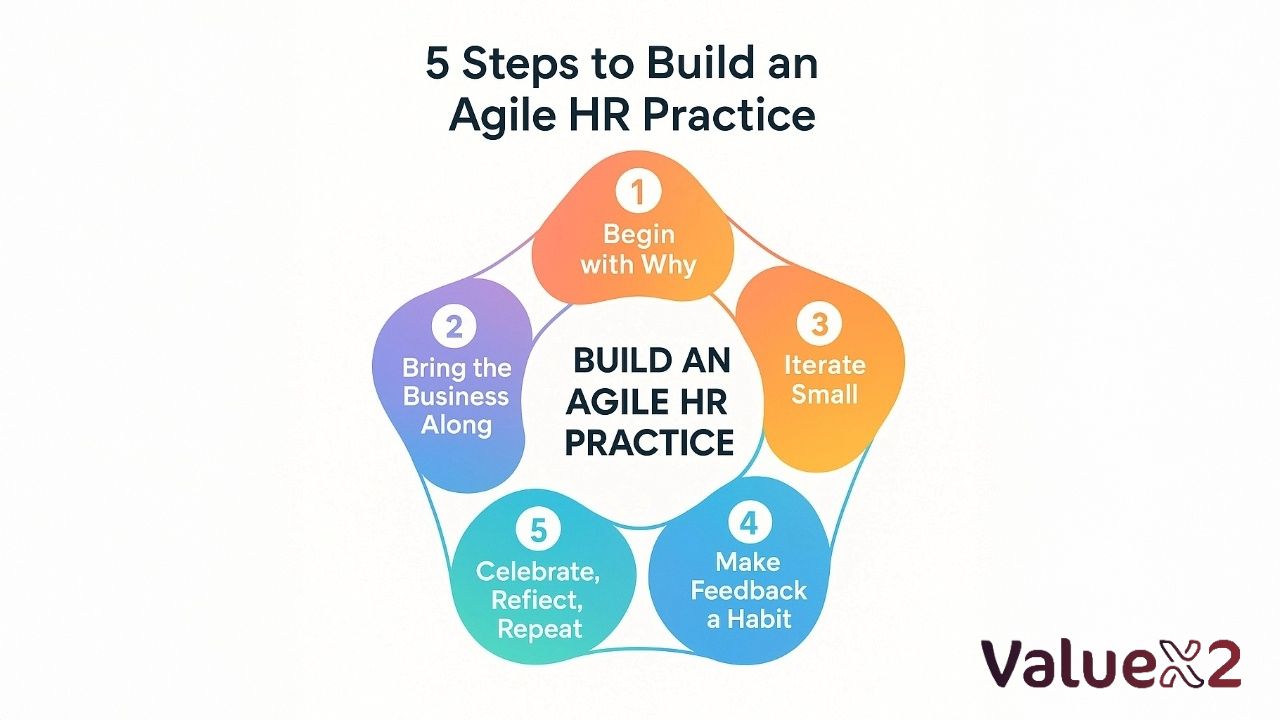 We are now seeing that the traditional HR teams are under pressure to respond faster to change, to people, and to business needs. And Nobody is giving us the right steps to tackle the issue.
We are now seeing that the traditional HR teams are under pressure to respond faster to change, to people, and to business needs. And Nobody is giving us the right steps to tackle the issue.
Whether it’s outdated onboarding processes, rigid performance cycles, or slow hiring systems, traditional HR models are struggling to keep up. The result? Missed opportunities, frustrated employees, and today, HR is being seen as reactive rather than strategic.
That’s where Agile HR comes in, not as a trend, but as a solution. It’s a shift away from rigid planning cycles and toward iterative, feedback-driven work that’s built around people, not policies. The goal isn’t to throw out everything you know. It’s to evolve how you deliver value, one sprint at a time.
1. Begin with Why
Before anything else, figure out what agility means for your HR team. Is it about more rapid hiring? Continuous feedback? Better employee experience? Identify a real and pressing problem where traditional approaches are failing.
Example: Your onboarding experience is inflexible and takes 14 days, but could you co-create a less rigid, digital-first experience with new hires instead?
2. Bring the Business Along
Agile HR doesn’t exist in a bubble. Partner with managers, teams, and even end-users to understand real needs. Create cross-functional teams that include not just HR professionals but also IT, operations, and business leaders. We believe that the best solutions are co-created, not handed down.
3. Iterate Small
Don’t try to change your entire L&D strategy at once. Start small, try a pilot, collect feedback, and learn what works, then adapt. This is where you apply agile methodologies such as Scrum or Kanban. You are working in iterations – there a sprints that narrow your focus and value quickly.
Example: run a two-week micro-learning session trial with one team, collect feedback, and adapt before scaling.
4. Make Feedback a Habit, Not a Hurdle
Agile HR thrives on continuous feedback from employees, managers, and even data dashboards. Regular stand-ups, retrospectives, and pulse surveys can give your team the insights they need to adjust in real time.
5. Celebrate, Reflect, Repeat
After every sprint or process improvement, pause to reflect. What worked? What didn’t? What will you keep or change in the next round? This is your learning loop — and it’s what turns good HR teams into great ones.
How to Learn About Agility in HR
You don’t need to be a software developer to embrace agility. But you do need the right tools, mindset, and learning resources to get there. Also, keep reading this blog, we have listed every single HR function and ways where you can find the right sources. This blog can be your complete guide to get the maximum info about HR, its tools, its future, its functions, its KPI’s and much more.
1. Understand the Basics of Agile
Start by learning the core values and principles of Agile (yes, the famous 4 + 12). Understand how iterative work, customer collaboration, and adaptability form the foundation. Resources like the Agile Manifesto are a great place to begin.
Tip: Don’t get stuck in the tech examples. Think about how “responding to change over following a plan” applies to HR strategies like performance reviews or workforce planning.
2. Learn about Agile Frameworks — and Apply Them to HR
Read up on agile frameworks like Scrum, Kanban, or Lean. You don’t need to follow them religiously, but learn how they may help structure your HR work better.
For example, if you already use a Kanban board to manage recruitment pipelines or employee requests, you’ve already done something similar with transparency.
3. Enroll in an Agile course for HR professionals
Agility in HR is a rapidly evolving space, and the learning options are evolving fast too. Professional development from agile courses tailored for HR professionals may look like:
- Agile HR Certification (provided by AIHR)
- PeopleOps courses offered by modern HR platforms
- Agile People or HR Scrum workshops
Courses like these take agile principles and translate them into real-life HR practices, giving you the knowledge and confidence to be more agile in your everyday HR work.
4. Learn by doing
Agile is not a theory; it’s a mindset. The best way to learn about it is to use it. Pick a single focus area: onboarding, feedback loops, learning design, and iterate. You will learn in one month of using agile about how to make something better than all the reading you’ve done in a year.
5. Join a community of agile HR practitioners
You can follow thought leaders, connect with new HR Slack groups, or jump in on HR transformation webinars. Seeing how others are making it work can help you keep inspired and engaged.
If you want a better understanding, we highly recommend you check out this video.
How can Agile help transform every HR Function into an outcome-oriented, valued team?
- Implementing Agile Performance Management
- Recruitment & Onboarding, the Agile Way
- Agile L&D (Learning & Development)
- HR Tools & Tech for Agility
- Diversity, Equity & Inclusion with Agile
- HR Measuring Agile HR Success
- Future Trends in Agile
- AI in HR
1. Agile Performance Management
Traditional reviews are an annual post-mortem. Agile performance turns them into a living conversation:
- Short-term, flexible goals. Set objectives for a quarter—or even one sprint—and adjust when strategy shifts.
- Frequent check-ins. Bi-weekly one-on-ones or monthly mini-reviews replace the once-a-year marathon.
- Coaching culture. 360° feedback and team retrospectives emphasize growth over fault-finding.
Employees always know how today’s work supports the current business mission, not last January’s plan.
5 Advantages of Agile Performance Management Over Traditional—our guide to continuous feedback, manager training, and real-world case studies.
2. Recruitment & Onboarding in Sprints
Hiring often stalls because steps run one after another. Agile hiring compresses those steps:
- Sprint mindset. Treat a vacancy like a one-week project: source, interview, decide, adapt.
- Daily stand-ups. Recruiters and hiring managers clear blockers fast—no endless email chains.
- Candidate feedback loops. Quick post-interview surveys reveal friction so you can fix it next sprint.
Onboarding echoes the same rhythm. Spread essentials over 30–60–90 days, with weekly check-ins to ask, “What would have helped you more?” Each new hire gets better support than the last.
Ultimate Guide on AI in Recruiting 2024 —templates, sprint boards, and case studies that cut time-to-hire in half.
3. Agile Learning & Development (L&D)
Big, annual training launches go out of date before the slides cool. Agile L&D delivers:
- Micro-learning sprints. A one-hour module ships in days, not months.
- Real-time feedback. Short quizzes and manager observations show if skills stick, then modules improve.
- On-demand content. Skill gaps identified this quarter get courses this quarter, not next year.
Result: employees stay current, and courses evolve with every iteration.
How to Implement Agile in Learning & Development—how to build “minimum viable courses,” set up L&D pods, and measure impact fast.
4. Tools & Tech That Power Agility
Speed demands visibility. Key enablers:
| Need | Agile Tool Example | Benefit |
| Track work | Trello / Jira Kanban | Spot bottlenecks at a glance |
| Talk fast | Slack / Microsoft Teams | Problems solved in minutes, not days |
| Capture feedback | 15Five / Lattice | Weekly pulse on morale and performance |
| See data live | BambooHR dashboards | Decisions backed by real-time metrics |
| Automate admin | Chatbots / ATS AI | HR focuses on strategy, and bots handle routine |
Top AI Tools for HR Analytics & Data-Driven Decisions—feature comparisons and
Quick-start tips.
5. Diversity, Equity & Inclusion (DEI) on an Agile Loop
Agile values—transparency, respect, rapid learning—naturally support DEI.
- Pilot, measure, scale. Test blind-resume reviews with one team, check results, expand if effective.
- Pulse inclusion surveys. Short, anonymous check-ins each sprint reveal how people really feel.
- Open retrospectives. Everyone’s voice counts; biases surface early and get fixed quickly.
By treating inclusion like any other product—build, test, refine—you create change that lasts.
Diversity, Equity & Inclusion with Agile—playbooks for iterative DEI programs and data tracking.
6. Measuring Agile HR Success
If you measure once a year, you steer with yesterday’s map. Watch these metrics in real time:
- Engagement pulses (monthly eNPS).
- Cycle time for HR projects—new policy in six weeks, not six months.
- Recruiting KPIs—time-to-hire, offer-accept rate, 90-day retention.
- Goal attainment after continuous feedback rollout.
- HR team velocity and burnout checks.
- Business impact—lower turnover, quicker product launches, higher customer scores.
Combine numbers with stories: if a sales VP says, “HR gets staffing done in weeks now,” that’s success you can quote.
Implementing Agile HR Practices to Transform Operations.—Sample dashboards, KPIs, and tips for linking people data to ROI.
7. Future Trends in Agile
- AI co-pilots. Predict turnover, rank résumés, and suggest feedback cadences.
- Enterprise agility. HR, Finance, and Ops embed in cross-functional squads.
- Always-on learning. Micro-lessons appear in the flow of work.
- Well-being by design. Teams iterate on schedules to balance output and health.
- Purpose-driven agility. Frequent mission talks keep speed aligned with meaning.
Framework for an L&D Revolution with AI & Agile.—expert forecasts, gig-economy angles, and global-team examples.
8. The Role of AI in HR
AI boosts agility by handling volume and spotting patterns humans miss.
- Smart recruiting. ATS algorithms surface hidden-gem candidates; chatbots schedule interviews 24/7.
- Personalised learning. Netflix-style engines recommend courses based on role and goals.
- Predictive insights. Models flag flight-risk employees so HR can act before resignation letters land.
- Self-service answers. Chatbots handle PTO or benefits questions instantly, freeing HR for high-touch work.
Roll out AI in small pilots, check for bias, and refine. Keep humans in the loop—technology augments empathy; it doesn’t replace it.
The Role of AI in HR (AI in HR)—top tools, rollout checklists, and ethics watch-outs.
Strategic Human Resource Planning and Agile
Strategic human resource planning is actually about the correspondence of HR tactics with organizational goals. Here, this planning becomes even more flexible due to the Agile environment it is being framed. Strategic processes of SHRM make sure that HR can quickly respond to changing business requirements, facilitate innovation, and enhance the level of organizational adaptability.
Integrating Agile Frameworks and Technologies in HR
Agile HR could work well with specific Agile methodologies, including Kanban and Scrum, since they are useful in organizing tasks and projects. Kanban is centred on work visualization, WIP optimization, and the improvement of the workflow. Scrum, however, focuses on the series of iterations and sprints, thus encouraging improvement.
In addition, continuing the use of Artificial intelligence in the management of an organization’s human resources can help effectively reduce the HR function across multiple points, starting from recruitment and ending with the organization of performance assessments.
When comparing Agile and Waterfall methodologies within the framework of HR, it should be noted that the Agile methodology promotes flexibility and adaptability, while the Waterfall methodology is characterized by clear steps. It is significant for the constantly changing environment that is visible in today’s business world.
Measurable Business Impact: Agile HR does not simply improve employee engagement – it also generates business outcomes. Companies that transitioned to agile HR models have seen further completion of critical talent initiatives and higher-value outcomes. In one particular case study by McKinsey, transitioning to an agile HR model resulted in a 75% reduction in delivery times for a new talent program and a 20% increase in employee engagement scores. Agile models also allow for better resource allocation: people in HR do less low-value admin and more high-impact work, which provides a productivity increase of 20-25%.
What are the Challenges and Considerations of Agile HR?
While the Agile HR strategy offers many benefits, it also comes with challenges:
Cultural Shift: Agile involves a shift of organizational culture, so the people should focus on flexibility and collaboration.
Training and Development: Agile practices should be adopted by HR professionals, and for this purpose, they should also be trained.
Measuring Success: Agile HR probably requires more values-oriented approaches to be implemented, and traditional HR metrics may not apply.
Conclusion
The Agile HR operating model is a new concept that is different from the conventional HR practices in place, offering flexibility and effectiveness in executing the core competencies of HR. In incorporating Agile, HR departments can quickly and effectively regain their relevance and contribute to the realization of the company’s objectives while at the same time increasing engagement from their employees and overall organizational productivity. With the world still facing constant changes in the business environment, Agile HR provides a strong framework for developing an HR department that responds to change.
Agile is not a tool set or a process but a culture in the right application of which amazing results could be realized in the remaking of the HR function. Transforming to Agile is a process that entails a lot of effort, but when it comes to the organizational Human Resource department, the advantages are worth the effort for any company that aspires to be future-oriented.
As an HR professional, it is vital to continuously upgrade your skills and future-proof your career. Learning about Agile HR and how strategic HR management can leverage agile principles and values in the ICAgile certification course, Agility in HR (ICP-AHR). These sessions provide real-world takeaways, frameworks, and methods that prepare teams to apply agility to HR strategies and build their collective intelligence.
Frequently Asked Questions
-
What is Agile HR?
Agile human resource management means the implementation of Agile Mindset and Principles such as adaptability, collaboration, and customer-centricity in the HR Functions. This methodology seeks to make the HR organization more sensitive to the employees, external changes, and organizational goals and requirements by closely linking the HR activities with the needs of the organization and employees.
It includes Agile for HR practices:
- Agile HR processes: Adopting iterative and incremental approaches to HR processes like performance management, recruitment, and onboarding.
- Agile HR project management: Utilizing Agile project management frameworks (e.g., Scrum or Kanban) to manage HR initiatives.
- HR Cross-functional collaboration: Promoting collaboration between HR and other departments using Agile principles like self-organizing teams and regular feedback loops.
These are a few ways in which it enables Human Resource Management to adapt its processes by implementing Agile Frameworks and Principles:
- Agile talent acquisition: Implementing recruitment strategies prioritizing individuals with an Agile mindset and values.
- Agile performance management: Shifting to Agile-friendly approaches such as continuous feedback and frequent check-ins.
- Agile Learning and development: Providing training programs that equip employees with Agile skills and mindset.
- Agile organizational design: Collaborating on restructuring the organization to support Agile practices like cross-functional teams and autonomy.
-
How does Agile HR differ from traditional HR?
Agile is about flexibility, the ability to change course quickly as needed, which contrasts with HR’s usual goal of developing long-term strategies and set protocols. This means that the dynamics of Human Resources can be changed frequently for a competitive response without making the company and employees lethargic. In this context, Agile HR also aims at integrated work and information sharing, avoiding functional teams’ separation. Hence, the versatility of the matrix structure enables a firm to provide a faster response to customer needs and even bring out more radical solutions.
-
What are the benefits of adopting an Agile HR approach?
Agile HR makes structure fluid and not fully rigid, continually involves employees to foster engagement, realigns HR operations with the business strategy, and also improves effectiveness because it avoids rigidity by striving to make improvements in cycles.
-
What challenges might an organization face when implementing Agile HR?
Some of the issues can be named as: transition to an organization with flexibility and collaboration, implementation means out-of-the-box thinking, and changing one’s mindset. Education of the Human Resources professionals about Agile approaches is critical, but can be costly. Organizations need to create new indices for the assessment of Agile HR performance since the existing methods of assessment can be irrelevant in this case. Other essential issues include resistance to change management and uniformity of communication with all the company’s employees.
-
How does Agile HR enhance the recruitment procedures?
It is essential to note that Agile HR enhances recruitment, and although it is not uniquely innovative, the objectives are divided into small parts, such that adjustments can be made if needed. This leads to an enhanced procedure and flow of the hiring process by cutting down the TTH and enhancing the candidate experience. Flexible working practices improve the communication of members of the recruitment team and thus improve their coordination.

Sagar is an HR Agile Coach & Business Agility Consultant with 15+ years of experience in HR functions at small and large multinational corporations. He has been running an HR consulting firm for the last few years, focusing on leveraging agile methods to increase business efficiency.
Sagar is an authorized instructor for ICAgile Agility in HR (ICP-AHR) and Business Agility Foundations (ICP – BAF) training courses. He has considerable experience in coaching and training on applying agile practices for his clients, primarily HR departments. He also provides consulting for HR for Agile and Agile for HR transformation to corporates.

